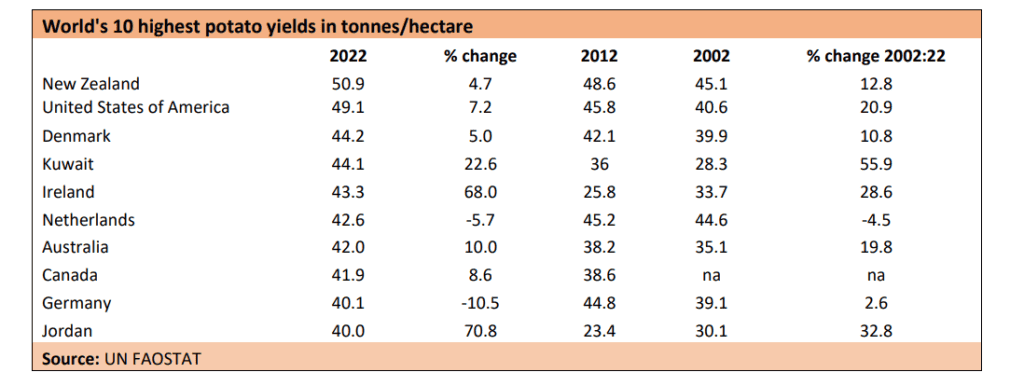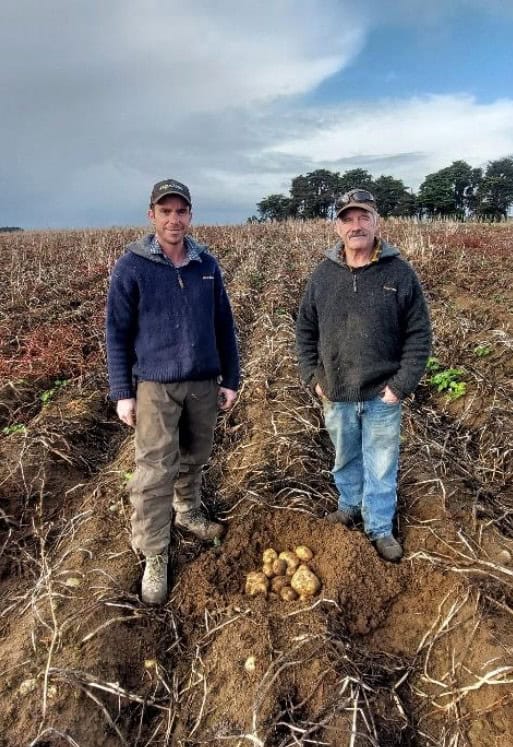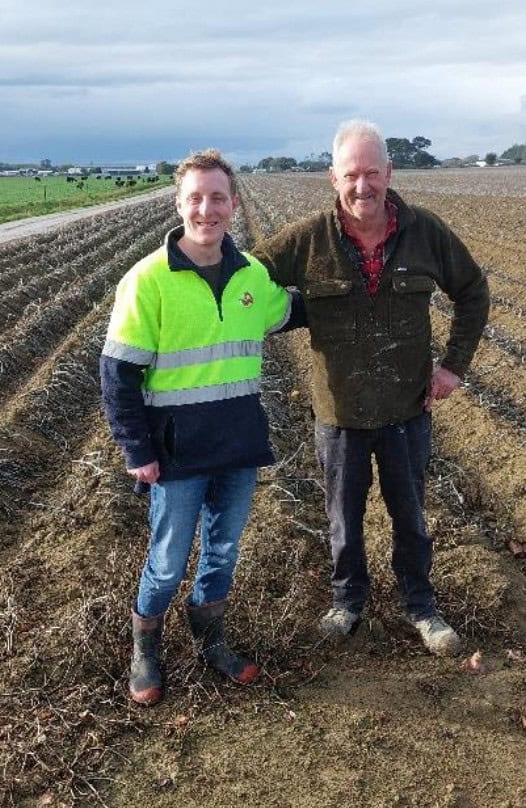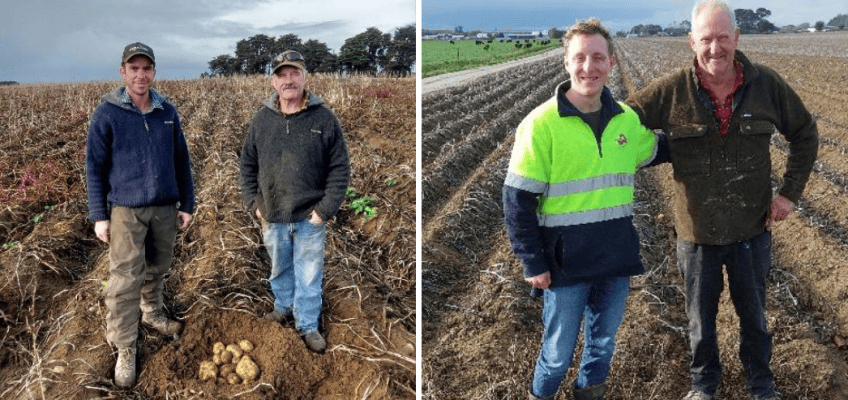Cedric Porter, Potato Journalist, World Potato Markets recently visited New Zealand after his attendance at the World Potato Congress in Adelaide, Australia.
The following is an extract for the World Potato Markets report- Issue 675 on New Zealand.
Highest yields in the world
New Zealand potato production in 2022/23 was at 419 200 tonnes, according to data from Potato New Zealand. That was 8.1% less than in 2021/22 and 20.5% lower than in 2018/19. There were 176 commercial growers in the country, who planted 8,424 hectares in 2022/23. The total value of production was NZ$931.3 million (US$570m; €527m). In the four seasons before then it was above NZ$1 billion.
Of the 419,200 tonnes grown, 55.9% or 234 194 tonnes was for processing, 40.2% or 168 855 tonnes for table use and the remainder for seed. New Zealand had the world’s highest yields in 2022, according to figures from the UN’s Food and Agriculture Organisation’s statistics division. It was the only country to exceed the 50 tonnes/hectare level at 50.9 tonnes/hectare. That compared to 49.1t/ha for the USA. Denmark had the highest European yields at 44.2t/ha.

Production figures for 2023/24 are not available yet, but growers report much lower prices this season suggesting an increased volume of potatoes. Table potato export prices hit NZ$1200/tonne (US$737/t; €679/t) last year and have fallen to as low as NZ$400 (US$245/t; €226/t) this season, according to growers World Potato Markets visited after the World Potato Congress. Fiji is the largest table potato export market taking 19,794 tonnes in the last year or 80% of the total. French Polynesia and Samoa account for more than 5% of sales.
Warmer Conditions
Ian Corbett’s family has been growing potatoes in the centre of the North Island for 75 years this year, specialising in table potatoes for the domestic and export market with some processing material too. They also grow seed in the mountainous area bordering the farm.
This season has been a drier one than last, reports Ian’s son Nathan (left in photo), making production easier but adding to an oversupply of stocks. In general, conditions are getting warmer than in the past and also a little wetter. Few frosts are reported now when in the past snow was a regular feature in the winters.
Planting takes place from September, with harvesting beginning in February. The farm averages 50 tonnes/hectare, but some fields will achieve more than 85t/ha.
A focus of the congress was on regenerative farming. The Corbetts adopted a one in five potato rotation with oat crops and pasture within that rotation. The farm runs 400 beef cattle and produces 5,000 lambs a year.


An intensive regenerative approach has long been adopted on the Pescini family’s farm about 80 kilometre’s north of the nation’s capital Wellington. Chris Pescini (wearing khaki top in photo) and his brothers are the fourth generation of the family to run the farm which grows 28 hectares of potatoes and 28 hectares of onions every year. Another 16 hectares of pasture is grown on an annual bas is and is grazed by the farm’s beef cattle adding nutrients to the soil. The farm grows for the domestic and export table potato market. Onions are also exported, mainly to Indonesia, although the failure to agree new fumigation rules has interrupted trade.
The Pescini family supplies packer GroPak in Palmerston North, 150 kilometres north of Wellington. Campbell Buchanan (next to Chris in photo – yellow top) said that the company shifted from growing to packing in 2010 and now supplies New Zealand’s supermarkets with washed potatoes, mainly in 2kg packs, along with a range of other vegetables. Agria is the most popular variety. The company has been packing a low carb potato under the Sunlite brand for a number of years.



